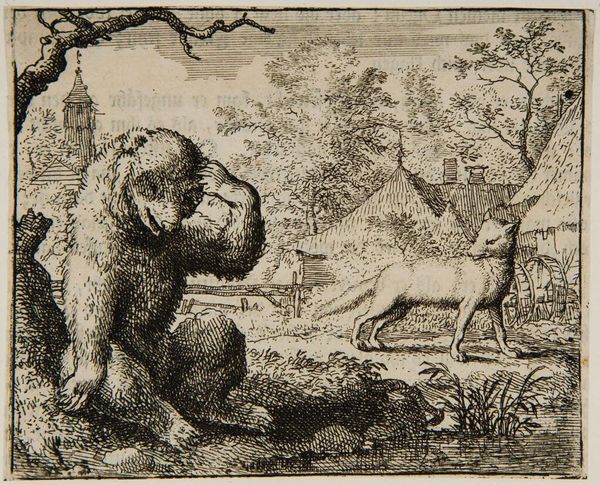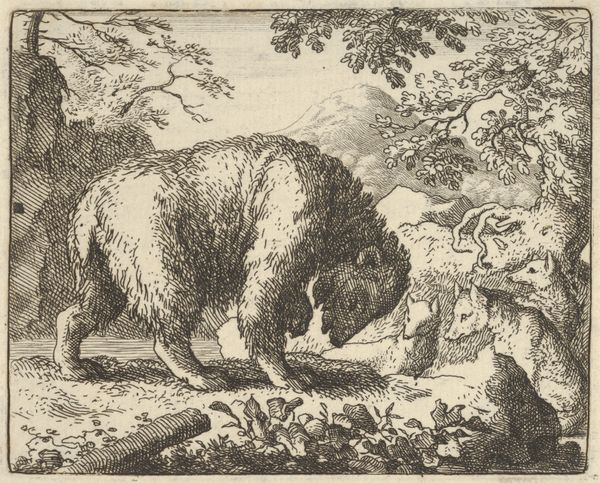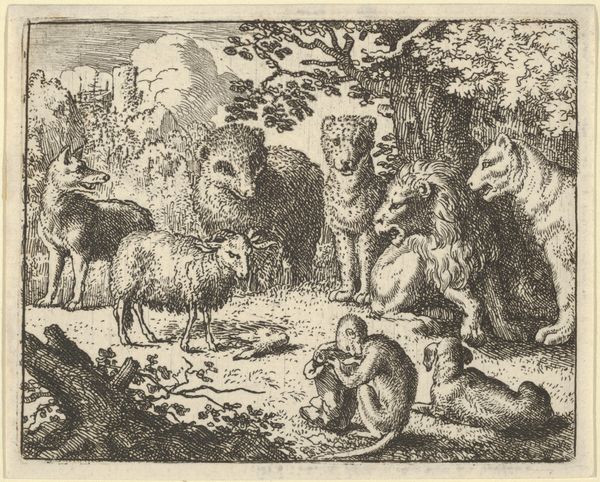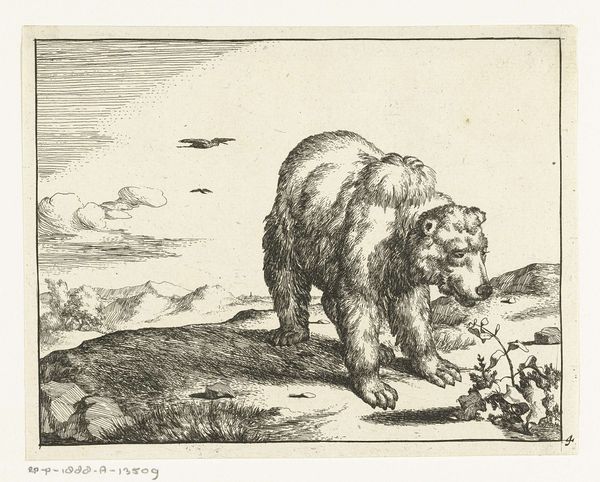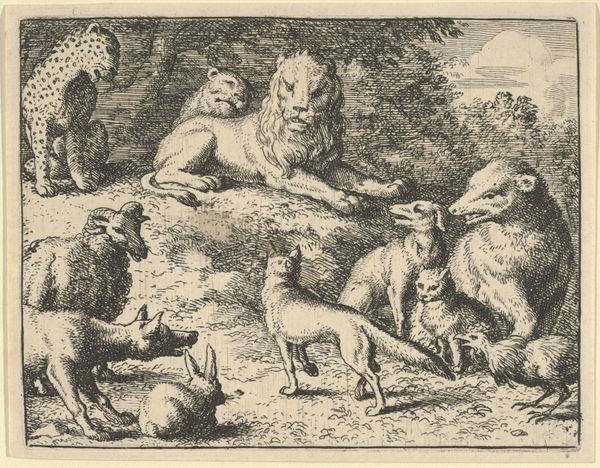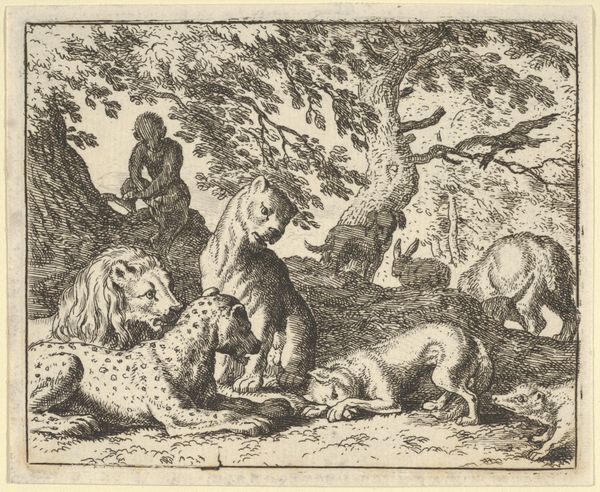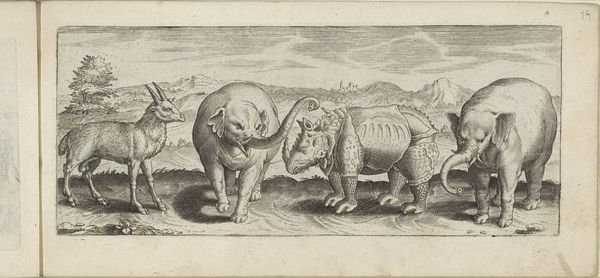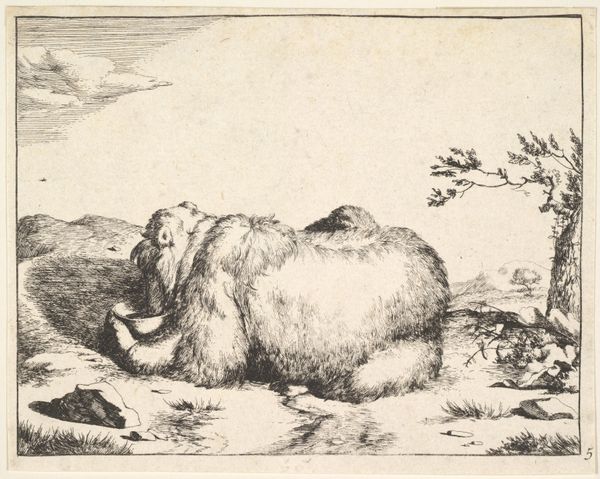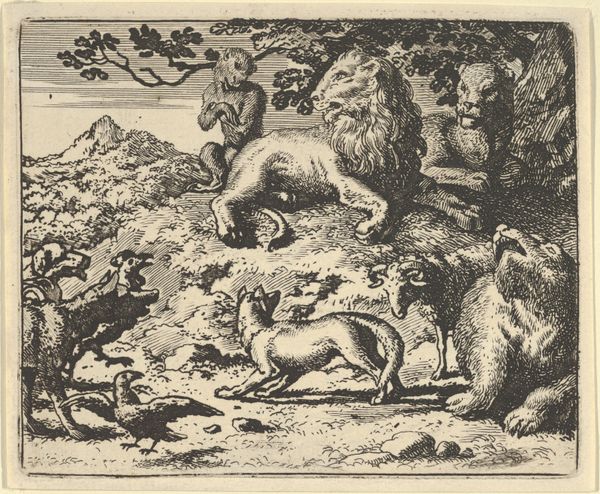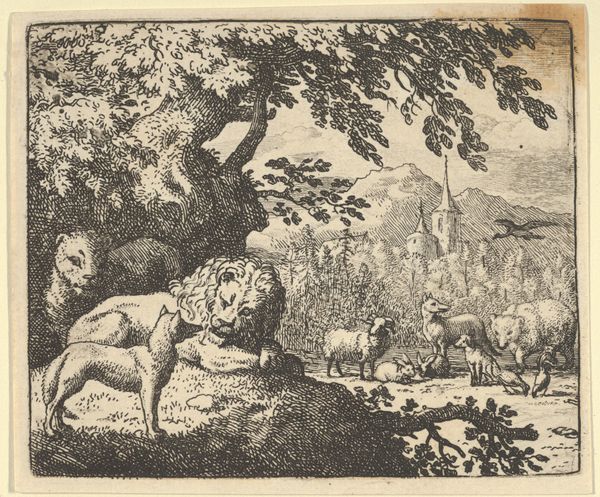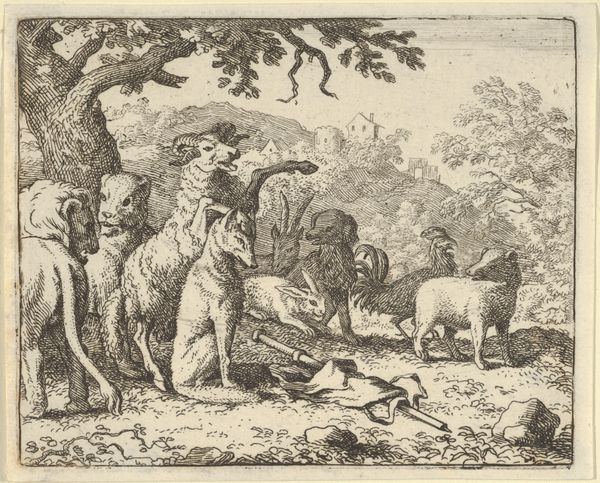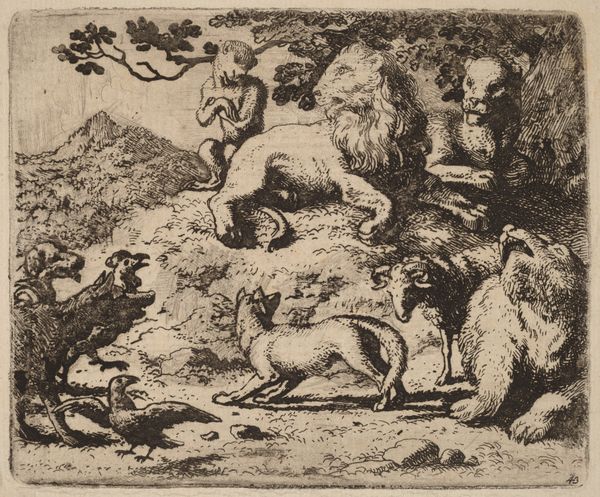
Renard Makes Fun of the Bear from Hendrick van Alcmar's Renard The Fox 1650 - 1675
0:00
0:00
drawing, print, engraving
#
drawing
#
narrative-art
#
pen drawing
#
dutch-golden-age
# print
#
landscape
#
figuration
#
line
#
genre-painting
#
engraving
Dimensions: Plate: 3 3/4 × 4 5/8 in. (9.5 × 11.7 cm) Sheet: 3 15/16 × 4 13/16 in. (10 × 12.2 cm)
Copyright: Public Domain
Curator: This print, made by Allart van Everdingen sometime between 1650 and 1675, depicts a scene titled "Renard Makes Fun of the Bear" from Hendrick van Alcmar's "Renard The Fox." Editor: My first thought is how stark the contrast is, this feels very immediate. You can see the individual engraved lines, right? The artist doesn't try to hide the labor of creation. Curator: Indeed. Van Everdingen was part of the Dutch Golden Age, a time heavily influenced by the expansion of the print market and, of course, the wider availability of printed books like "Renard the Fox," so artists catered to that demand. This narrative quickly became deeply embedded in the social and political fabric of the time. Editor: I am also intrigued by the decision to show the bare bones of the story. Engravings don’t have the range of tonality of paintings or other drawing mediums. It's all about that linear texture, right? It creates depth and defines the characters - really brings to light the inherent limitations of materials. Curator: Absolutely, that bold linearity also brings into focus the satire inherent in the tale. Look how Renard, the fox, embodies cleverness and cunning while the bear is caught looking rather foolish. Prints such as this were vehicles for commentary on human behavior, particularly the flaws and foibles of those in power. The rise of the merchant class was starting to exert its power, too. Editor: I wonder about the function of prints like this beyond the narrative itself. Its wide circulation means more and cheaper materials, implying a consumer base beyond the elite circles traditionally associated with art. And, really, the printing process itself—reproducing images at scale and speed—mirrors the kind of manufacturing revolution then starting. Curator: I think that you have an astute interpretation, because images like these provided a sense of cultural identity that had reach across all social levels of Dutch society at the time. Its symbolic structure spoke to everyday experiences. Editor: That feels right. Thinking about it materially really enriches our appreciation. Curator: It certainly gives another valuable layer of interpretation and appreciation to this piece of art and history.
Comments
No comments
Be the first to comment and join the conversation on the ultimate creative platform.

